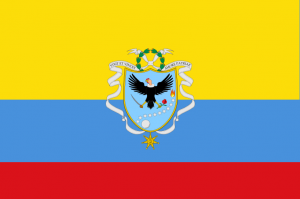
Bolivar Patriot Flag 1820
Captain Job Northrup led a double life. As a Patriot privateer in the early 1800s he captured Spanish ships, seizing their goods with a singular fervor. Prize money was carefully banked in the West Indies while Northrup combed the Gulf of Mexico, waiting for the end of a successful cruise, so he could make his secretive month-long return voyage home, to the faraway Canadian village of St. Catharines near Niagara Falls, where everyone cherished him for his unequalled benevolence and pleasant personality.
“Of all the newcomers to St. Catharines, Commodore Northrup was the greatest acquisition to the place, in his own peculiar line,’ wrote a friend, Jedediah Prendergast Merritt, years later in 1875.
Along with his wife and young daughter, Capt. Northrup arrived at the Ontario community in 1821. Operating under the Mexican flag of the Patriots, he already had been a notorious privateer for five years, in association with both the Laffites and Louis Aury at Galveston and New Orleans. By 1821, Northrup had joined forces with Bolivar and Artigas to patrol the seas for Spanish Royalist ships.
“At each time he returned to St. Catharines, (Northup) was in possession of a respectful share of the “needful.” Privateer, buccaneer or commodore, his role among us was to spend money,” noted Merritt. “His turn-outs were the best, his dinners the finest, and his social qualities unbounded.”
Spanish Royalists experienced the unpleasant side of the notable captain. In 1816, as commander of the Mexican Independencia, he had boldy but unsuccessfully tried to ransom some Spanish officers to authorities at Pensacola. By 1821, the corsair had plagued Spanish shipping to such an extent that he had earned a reputation rivaling even that of his friend Jean Laffite,
In mid 1821, a Massachusetts reporter wrote, “We learn that the buccaneering trade still flourishes off the Islands and on the South American coasts. Indeed, piracy and plundering on the ocean have become so well organized, and so extremely practical, that they are both carried on without scruple, and without concealment. It is but a short time since an attack was made by one of the most notorious of these marine banditti_the renowned Job Northrup_upon a steamboat lying off the island of Cuba, which by the narrowest chance only escaped his fangs.”
Before he turned against the Spanish Royalists, Northrup, born in 1785 in Woodbridge, Conn., had seemed destined for a career in the US Navy. The heady opportunities flaunted by New Orleans schemers and Patriot privateers successfully caught his attention in 1816 while he was sailing master (navigator) for the US brig Boxer. That ship captured the murderous Capt. William Mitchell and his richly laden prize Cometa off the Balize on April 8 of that year.
An anonymous Navy officer who must have been onboard the Boxer when she captured the Cometa wrote about what he saw with evident jaw-dropping awe that fellow crewman Northrup must have shared: “The captured schooner Cometa is about 53 tons burthen and is one of the swiftest sailing vessels of her size I ever saw. She had on board one long 12 pounder on a pivot, 168 years old: and five other guns, from 3 to 6 pounders, all of brass. The prize is supposed to be worth from $50-60,000. One small basket is said to contain $10,000 worth of jewels. The cabin of the Cometa contained a great quantity of beautiful china ware, and the wardrobe of the captain is very elegant.”
Sometime during the summer of 1816 while the Boxer was cruising off the Balize, Northrup jumped ship and joined the Laffites and their privateers. By early September, he was captain of a Mexican Republican privateer, the Independencia. Among his first prizes was a Spanish letter of marque, whose crew he landed and treated with humanity. Soon afterwards not far from the Balize below New Orleans, he boarded a Spanish brig, taking care not to harm the vessel, cargo or crew. He stayed around the coast near the Balize and Grand Isle for some time, making authorities wary.
In early 1817, in association with French privateer Louis Aury, Northrup was sailing the Independencia as the Hotspur with a letter of marque from the Mexican Republic. The ship was soon seized by New Orleans port officials for irregularities after its name change, but Capt. Northrup went free.
He then seems to apparently have stayed idle for almost two years, for newspapers fail to mention him again until April 1819, when the British schooner Speedwell ran across the Patriot privateer La Constantia under the command of a friendly Capt. Northrup. When the British officers went onboard, he showed them his commission from Artigas, president of the “Oriental Republic of La Plata.” The officers were received “very politely but in all parade of preparation. Capt. Northup professed his disposition at all times to treat the British flag with respect, and said he had friends at Nassau,” reported the Speedwell captain.
Around the West Indies a short time later, Northrup’s crew got ugly and attempted to mutiny. Two of the ringleaders were shot, another crewman wounded, and several others were severely punished by Northrup and his officers. The cause was said to have stemmed from the “effects of a case of gin, which the crew had clandestinely taken on board at Turks Island. The mutineers had armed themselves with harpoons, pistols and bludgeons.”
Soon the crew of the Constantia faced a different conflict when they fought an almost lethal battle with a Spanish topsailed schooner of 14 long brass guns in the Old Straits. During the fight, the Constantia’s main gun got dismounted from its carriage, giving the Spaniards an advantage, forcing Capt. Northrup to haul off. The Constantia was said to have been “literally cut to pieces, having 300 cannonballs and grape shot in her hull, rigging and sails.”
As he slowly made his way to a friendly port to make repairs, Northrup asked for help from the American schooner Commerce near the Hole in the Wall area. Capt. S. Thaxter of the Commerce said Northup “treated us very politely. All he asked for was two planks to repair his gun carriages_for he had had an engagement with a Spanish sloop of war and lost three of his officers and 12 men. Capt. Northrup had been out three months and taken two prizes, one of which was a Spanish Guineaman with 45 slaves_and manned altogether with Englishmen and Americans_and had no papers whatever to show, but her log book. The Patriot boarding officer said they had no money to pay for the planks, but asked my name, and said if they should fall in with me again, they would endeavor to pay me.”
More problems for the Constantia loomed ahead. On the Fourth of July, 1819, Capt. Northrup anchored the ship at Ragged Island with the intention of celebrating the anniversary of American independence. A quarrel about the observance started up among the crew, who were of different nations. The next day, eight of the crew found themselves set on shore.
The worst was yet to come. At Norfolk, Va., where Northrup had gone to repair his battered ship, he lost his brother and fellow privateer Henry in a tragic boating accident. Henry and another crewman, Richard Hambly, had gone sightseeing in the ship’s boat when it upset and they both drowned. Their bodies washed up in Hampton Creek and were buried in the church yard of that town.
Capt. Northrup’s luck changed for the better the following year. Capt. Trowbridge of the schooner Decatur said he spoke to Northrup in June 1820 on his passage in the West Indies on the way to New Haven. Northrup told him that he had been successful of late, and had deposited $30,000 in specie with one firm in the Bahamian islands. Northrup seemed to be consumed with seizing as many prizes and cargos as possible, without resorting to unnecessary violence.
In the 1820s, Northrup spent part of each year in the Gulf of Mexico, and the other time at home in St. Catharines, resuming the cloak of convivial family man. With his Spanish gold he observed Christmas with his family and styled himself like a Robin Hood of the Spanish Main. A neighbor at St. Catharines recalled that the buccaneer kept the holiday in a “grand old style, being a continual round of festivities, balls, parties, sleigh rides, social visiting, turkey shooting, etc. In fact it seemed as if the ancient days of the Yule and the Holly were revived in the western woods…a grand dinner was given by Commodore Northrup to which all friends were invited. Harmony and good will prevailed throughout. The sick, the poor and unfortunate were looked after, as were all else who could plead distress.”
Northrup was known for his unparalleled generosity. Once when the captain’s team of horses ran off with his carriage at St. Catharines, he gave both the horses and the carriage to the man who recovered them, saying he would never drive them again. He also frequently gave money to his small daughter for playing the piano for his dinner guests.
Northrup had been a sailor for over 15 years by the time he retired, in early 1825. Utilizing his early experience as a savvy navigator, Northrup demonstrated great skill in picking off prizes in the Gulf. His technique was detailed in the following account from 1824, when he commanded the Colombian national schooner General Santander, a year and a half after Jean Laffite had had that ship’s helm.
On August 19, 1824, while in the Florida channel, the General Santander fell in with a fleet of four vessels under the convoy of a French brig of war, Genie, Capt. Bourdais, of 16 guns. Capt. Northrup suspectyed the ships being protected were all Spanish, so he hoisted a flag to learn from Capt. Bourdais just what they were, and if it was his intention to protect them. Bourdais claimed all the vessels were French, but appearances didn’t look right, and Northrup didn’t believe him. He ran the General Santander beside one of the suspect ships and asked what flag she was under and got the answer “Spanish,’ with that flag run up and then struck. Northrup immediately took command of that ship, named Barbaretta, The Genie made no move toward defense, so he proceeded to pick off another of the fleet, the schooner Medusa, which was captured four hours later, followed by the brig Noticioso, of 10 guns and 45 men, which also surrendered. The prizes were manned and ordered for Porto Cabello.
Still on the prowl for the last ship of the convoy, Capt. Northrup was stymied by the approach of nightfall as he sought to close ranks with the felucca Ligero, which was laden with coffee from Matanzas for Cadiz, but by the next afternoon he had seized her, too with the French convoy leader completely neutral through the whole series of events. The captures were all the more remarkable for the fact the General Santander was in somewhat damaged condition when they were made: Northrup could not accompany his own prizes back to port due to problems with a loose stern, plus the fore and foretopsail yards were in disrepair, forcing him to bear away to Norfolk for shipyard repairs. During this cruise Northrup captured 15 guns, with three fine vessels (two of which were Guineamen bound to Africa) and made 120 prisoners. The General Santander accomplished this largely through the skill of her commander, as the ship only mounted five guns herself.
Northrup capped his career on the high seas with a bloody action off Cumana in late December 1824, when the General Santander successfully fought a Spanish government brig called the Marie Santa, Capt. Jose Andoyes, of 22 guns and a valuable cargo. Somehow Northrup and his crew managed to win the conflict and seize the prize, even though vastly outgunned. The General Santander had seven killed and 16 slightly wounded, and the Marie Santa 26 killed and 19 wounded.

Welland Canal which Capt. Northrup built at St. Catharines
His narrow escape from death convinced Northrup to give up the privateering business for good and head home to St. Catharines to retire. He became a stalwart member of that community, involved in the Welland Canal project, the Episcopal Church of St. George, plus running a small ship on Lake Ontario until he became too ill to continue. He died Oct. 19, 1833, at the age of 48 following an illness of two years.
Newspapers around the Niagara area lauded the former privateer, saying his relatives and friends “are deprived of an open-hearted, generous and sympathetic companion and friend; and the society of the neighborhood will long experience the void his absence will create, more particularly on occasion of general contribution for laudable, patriotic, and charitable programs, in which few could claim a higher rank on the scene of enterprising liberality and usefulness than Commodore Northrup.” Another memorial said Northrup was “deeply lamented by the village community as a most generous and warm-hearted man_sincere in his actions, and beloved by all who knew him.”
Due to his disappearance from the Gulf following the Marie Santa battle, the Spaniards and most of the other captains of the day probably thought Capt. Northrup died of his wounds in 1824. His life in St. Catharines was not known in the United States until years after he had died.
The most ironic part of the whole story, though, is that two famous privateers, both Jean Laffite and Job Northrup, ended their careers on the same ship: the General Santander of Colombia.
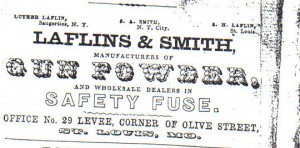 Although the “Journal of Jean Laffite” was introduced to the public by John Andrechyne Laflin, a person with a shady past and a reputation as a forger, we cannot entirely discount his claim that there was some connection between the well-established Laflin family and Jean Laffite.
Although the “Journal of Jean Laffite” was introduced to the public by John Andrechyne Laflin, a person with a shady past and a reputation as a forger, we cannot entirely discount his claim that there was some connection between the well-established Laflin family and Jean Laffite.

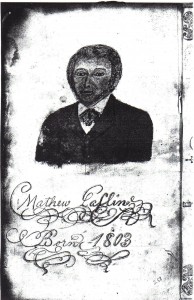
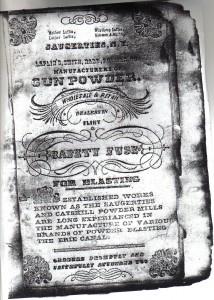

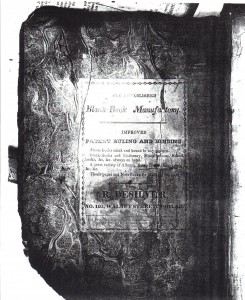
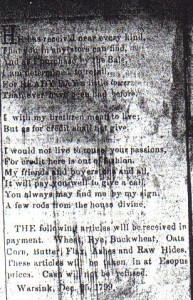
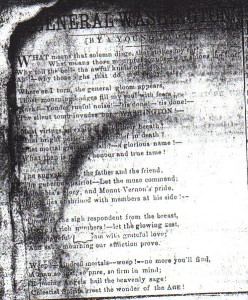
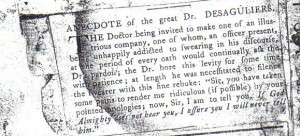





Recent Comments